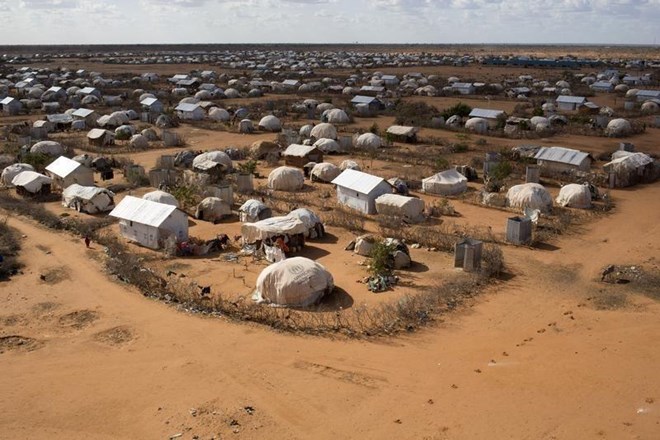
Wednesday March 24, 2021

An aerial view shows an extension of the Ifo camp, one of the several refugee settlements in Dadaab, Garissa County, northeastern Kenya, October 7, 2013. REUTERS
The Kenyan government has issued a two-week ultimatum to the United Nations High Commissioner of Refugees (UNHCR) to ‘have road map on definite closure of Dadaab and Kakuma refugee camps’. Saying there is no room for further negotiations.
The two are the world’s largest refugee camps located in Kenya.
Kenya’s Daily Nation reports that Interior Cabinet Secretary Fred Matiang’i delivered a letter to the UNHCR which stated Kenya’s concerns of rising terror threats planned from Dadaab and Kakuma refugee camps.
“There is no room for negotiation. We must strike a balance between Kenya’s international obligation and her domestic duties. We do have a domestic responsibility to protect Kenya,” the letter read in parts.
UNHCR Representative in Kenya, Fathiaa Abdala said that she would present the matter to senior officials and said that the commission was committed to finding new solutions that would see the refugees reduced in Kenya.
In the letter, Kenya cited terror threats as the main reason for its latest request and neglect by other countries to aid in managing the over 500,000 refugees.
Matiang’i said that the past Mpeketoni, Lamu, Garrisa and Westgate attacks were planned and executed from the said refugee camps.
In addition to terror threats in the country and the draining of resources, Matiang’i also noted that the government’s effort to have war-torn areas where Al-Shabaab operates in Somalia to be labeled as terrorist organizations have been hindered continuously.
Matiang’i further noted that the smuggling of contraband from Somalia has been the main source of funding terrorism activities despite the governments’ effort to cab illegal trading within the borders.
If the two weeks lapse without the UNHCR taking any action, the government is set to have the refugees deported back to their countries of origin.
More than 500,000 people would be left homeless as a result.
With a population of more than 274,000, the majority of refugees at Dadaab and Kakuma are from Somalia. The rest of the refugees are comprised of people from South Sudan, the Democratic Republic of Congo, Ethiopia, Rwanda and Uganda and other neighboring countries